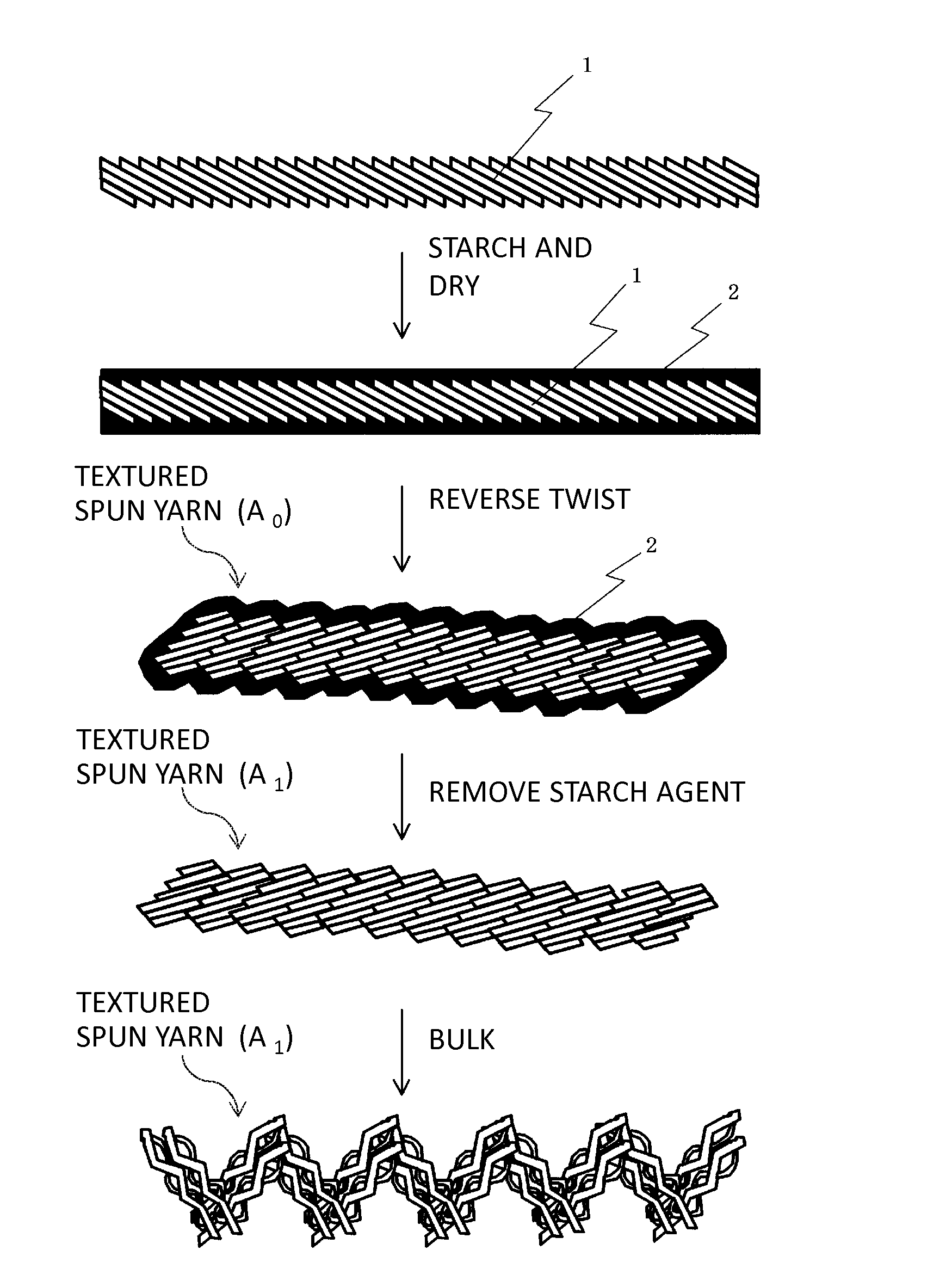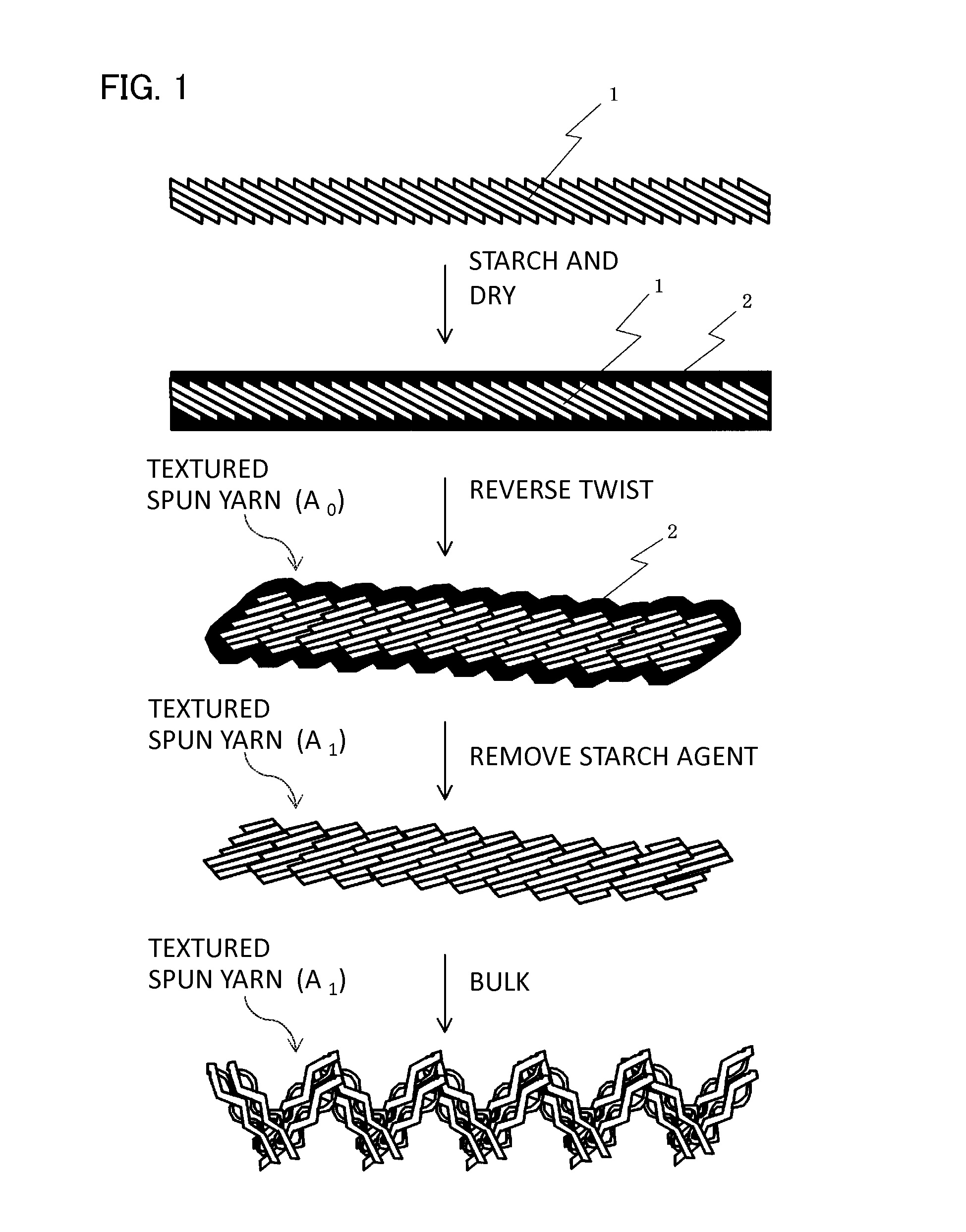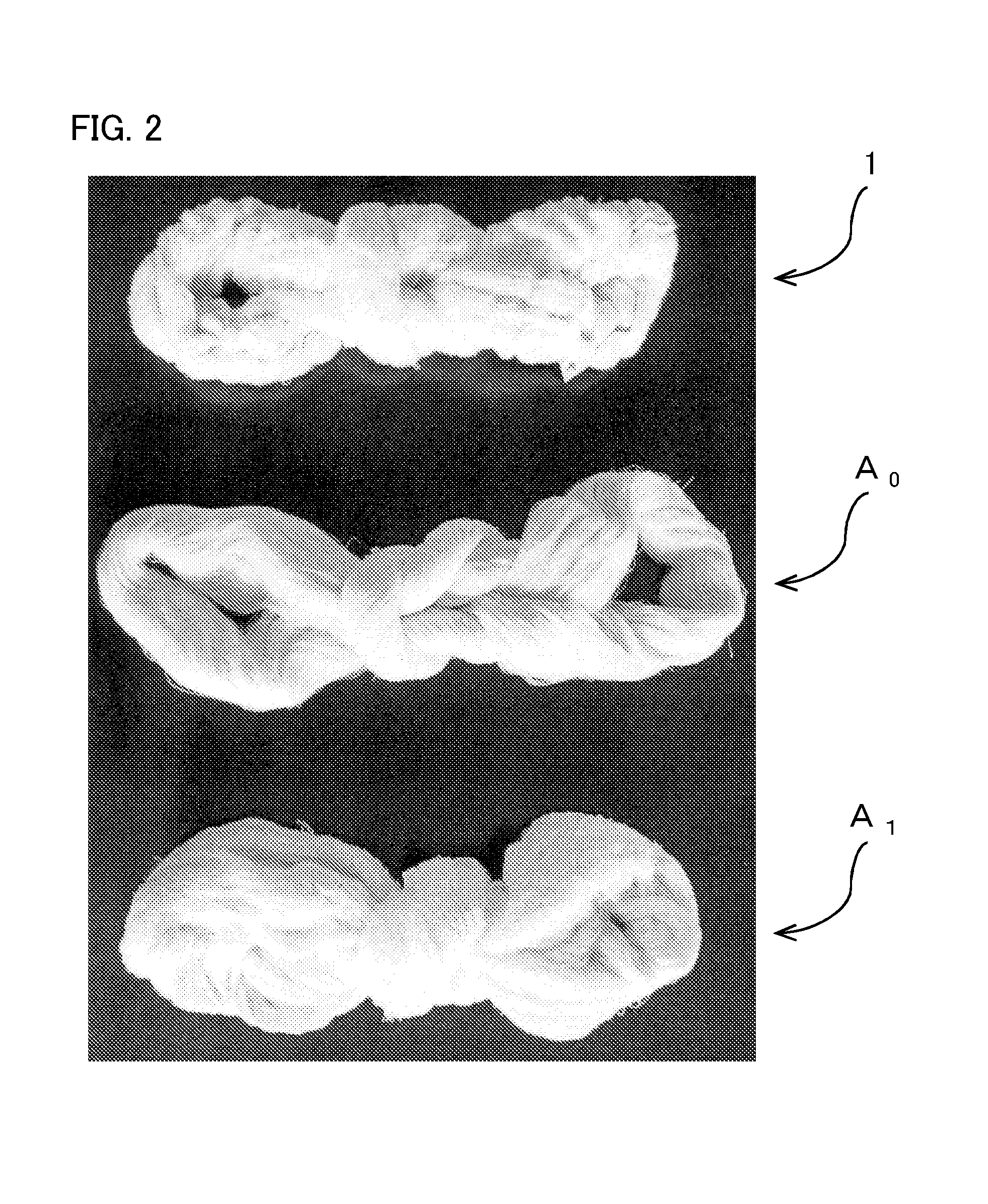Textured spun yarn and woven or knitted fabric using same
a technology woven or knitted fabric, which is applied in the field of textured spun yarn, can solve the problems of difficult application to a yarn using cotton fiber, complex process, limited method, etc., and achieve excellent air permeability, excellent texture, and excellent texture
- Summary
- Abstract
- Description
- Claims
- Application Information
AI Technical Summary
Benefits of technology
Problems solved by technology
Method used
Image
Examples
examples
[0063]Hereinafter, the invention is described in detail with Examples and the like. The invention is not limited by the following examples at all. In the following Examples and Comparison Examples, an adhesion amount (dry mass) of the starch agent in the starched and dried single spun yarn was calculated as follows.
[0064](1) (i) The starched and dried single spun yarn to which the starch agent adheres is extracted by 1000 m and is dried at 100° C. so as to be made into an absolute dry state (state where mass decrease is not observed). Then, the mass (Wa) (g) at this time is measured.
[0065](ii) The single spun yarn (1000 m) the mass of which has been measured in the above-mentioned process (i) and to which the starch agent adheres is processed in accordance with JIS L 1095:2010 “starch component C method (sodium carbonate method)” to remove the starch agent, and then, is dried at 100° C. so as to be made into the absolute dry state (state where mass decrease is not observed). Then, t...
PUM
| Property | Measurement | Unit |
|---|---|---|
| temperature | aaaaa | aaaaa |
| temperature | aaaaa | aaaaa |
| temperature | aaaaa | aaaaa |
Abstract
Description
Claims
Application Information
 Login to View More
Login to View More - R&D
- Intellectual Property
- Life Sciences
- Materials
- Tech Scout
- Unparalleled Data Quality
- Higher Quality Content
- 60% Fewer Hallucinations
Browse by: Latest US Patents, China's latest patents, Technical Efficacy Thesaurus, Application Domain, Technology Topic, Popular Technical Reports.
© 2025 PatSnap. All rights reserved.Legal|Privacy policy|Modern Slavery Act Transparency Statement|Sitemap|About US| Contact US: help@patsnap.com



